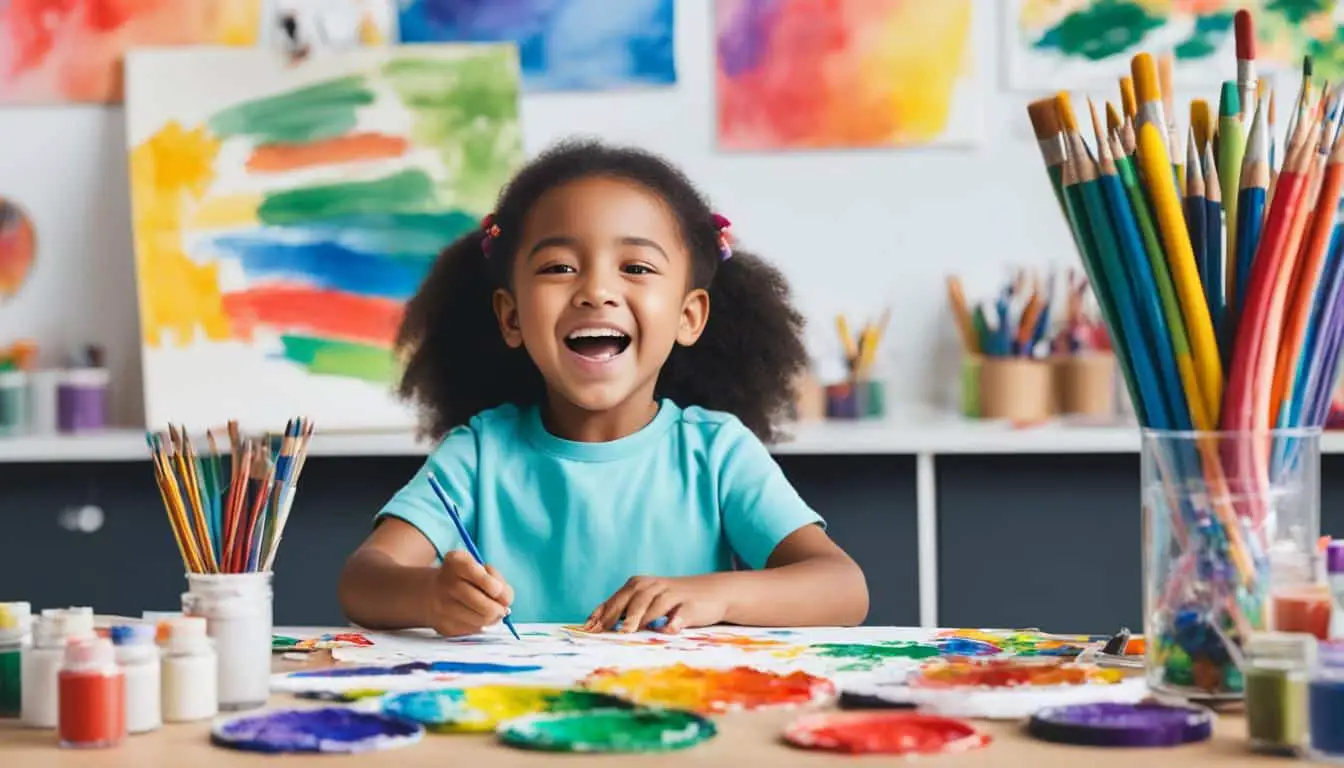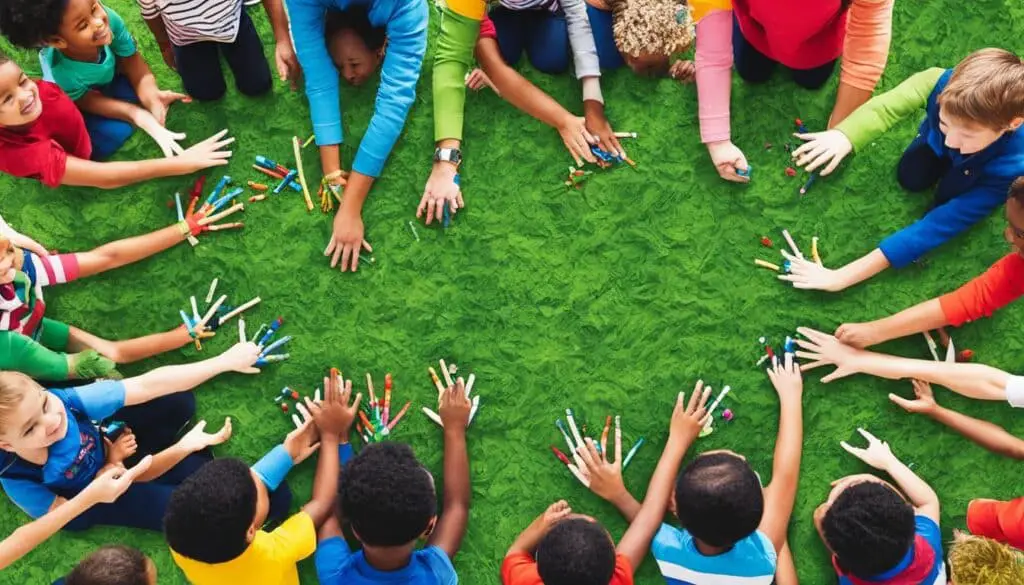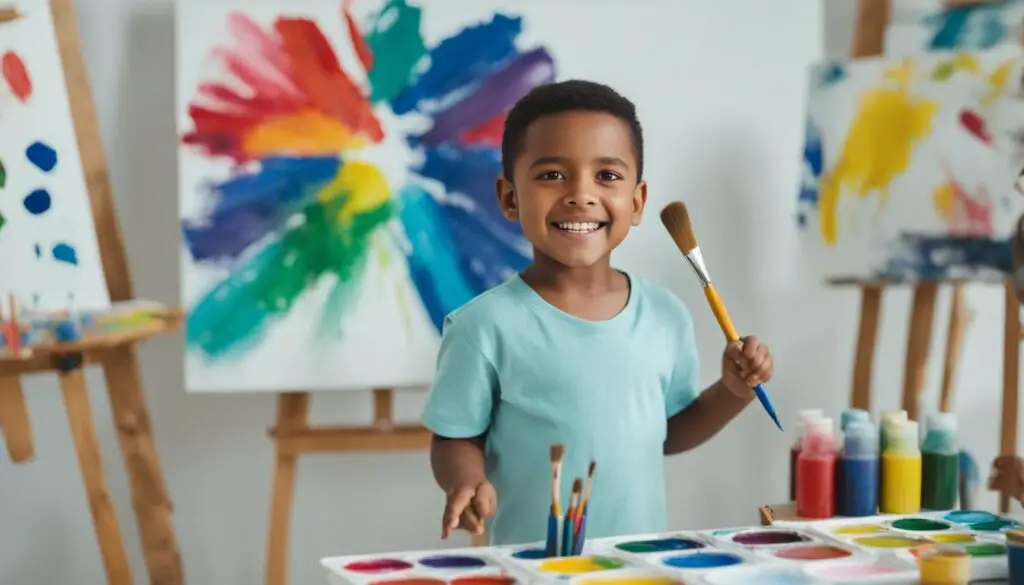
The Crucial Role of Art in Child Development: Boosting Creativity, Confidence, and Cognitive Skills
As a professional copywriting journalist, I believe that engaging in creative activities, particularly art, is imperative for the development of a child’s cognitive, emotional, and social skills. Art provides a medium for young minds to express themselves, develop problem-solving abilities, empathy, and promote collaboration.
Creativity enables children to think out-of-the-box, which helps develop their critical thinking skills. Art activities provide an excellent opportunity for children to explore and experiment with various concepts and ideas, which can help them build their understanding of the world around them. In addition, art can become a crucial aspect of therapy and emotional support, as it is an effective way for children to express themselves.
Through art, children also learn how to work collaboratively and communicate their ideas effectively. It fosters an environment that is supportive and inclusive, which enables children to work together and share their ideas. It is essential to understand that art is not only fun but also provides a crucial foundation for a child’s holistic development.
Key Takeaways:
- Art activities help in the cognitive development of children.
- Art serves as a medium for the development of emotional intelligence and can be used in therapy.
- Engaging in artistic activities promotes social skills and collaboration among children.
- Artistic accomplishments improve a child’s confidence and self-esteem.
- Developing creativity in a child can help unlock their potential and shape their young minds.
Enhancing Cognitive Skills through Art
Engaging in art activities is highly beneficial for the cognitive development of children. Studies have shown that participation in artistic endeavors can enhance problem-solving skills and foster critical thinking.
Art involves exploring new ideas and complex concepts, which requires children to develop their cognitive abilities. The act of creating art encourages children to think outside of the box, experiment with materials, and make strategic decisions. By doing so, they develop problem-solving skills that can be applied to other aspects of their lives.
Moreover, creating art involves reflection and evaluation of one’s own work. This process of self-reflection helps children develop a critical eye and discernment. It also contributes to the development of analytical thinking, which is a valuable skill for both academic success and personal growth.
For example, when a child creates a painting, they must decide on the colors they will use, how they will use them, and what they want to convey with their artwork. This process requires planning, decision making, and problem solving, all of which are important cognitive skills that can be developed through artistic activities.
“Art is not what you see, but what you make others see.” – Edgar Degas
Benefits of Art Activities on Cognitive Skills
| BENEFIT | DESCRIPTION |
|---|---|
| Problem-solving skills | Participation in art activities stimulates the brain and can help children develop problem-solving skills that can be applied to many areas in life. |
| Critical thinking | Creating art requires self-reflection, evaluation, and decision-making, which are important aspects of critical thinking. |
| Innovation | Art activities encourage children to think creatively and step outside of their comfort zone, leading to innovative ideas and approaches to problems. |
In summary, artistic activities are a powerful tool for enhancing cognitive skills in children. Whether it’s painting, drawing, music, or dance, participation in art can contribute to the development of essential cognitive skills, including problem-solving and critical thinking.
Developing Emotional Intelligence through Art
Children’s emotional intelligence is crucial for their well-being, growth, and development. Emotional intelligence helps children understand their emotions and those of others better, thus improving their self-awareness and empathy. Art activities provide an avenue where children can express their feelings, thoughts, and emotions creatively.
Self-expression is an essential part of emotional intelligence, and art allows children to express themselves creatively. Children can use various forms of art, such as painting, sculpting, and drawing, to communicate their emotions and thoughts. Art activities, therefore, allow children to develop a greater understanding of their feelings and an outlet to express them in a healthy way.
Additionally, art helps children understand and empathize with others. Through artistic expression, children can create stories and scenes, developing a better understanding of different perspectives and experiences. They are encouraged to consider different viewpoints and expand their understanding of the world around them.
Art therapy is also a highly effective method of promoting emotional intelligence. Art therapy sessions provide children with a safe space to work through and express complex emotions and feelings. The creative process allows them to explore and identify their emotions better, build self-awareness, and improve their ability to empathize with others.
“Art has the power to heal, transform, and build emotional intelligence in children.”
Fostering Social Skills through Art
Engaging in art activities provides a unique opportunity for children to foster their social skills. Through collaboration and communication, children learn to work together while engaging in a shared creative experience.
Creating art in groups allows children to express themselves while working toward a common goal. This experience promotes social interaction and provides opportunities for children to develop relationships with each other. Participating in art communities, such as art classes or clubs, can also provide children with a sense of belonging and connection to others with similar interests.
Moreover, art activities can teach children important social skills, such as empathy, respect, and compromise. By engaging in a creative process with their peers, children learn to respect each other’s ideas and perspectives, and to compromise to reach common goals. These social skills are essential for building healthy relationships and navigating the world around us.

“Creating art in groups allows children to express themselves while working toward a common goal.”
“Art provides children the freedom and safety to express themselves creatively in a non-judgmental and inclusive setting,” said Lisa Johnson, a child therapist from San Francisco.
Overall, art is a powerful tool for fostering social development and teaching children essential skills for interacting with their peers. By promoting collaboration, communication, and a sense of community, art activities can help children develop into well-rounded individuals who are prepared to navigate the world.”
Boosting Confidence and Self-Esteem with Art
In this section, we explore how artistic accomplishments can positively impact a child’s self-confidence and self-esteem. Engaging in creative activities helps children develop a positive self-image and a stronger sense of self-worth. As children create art, they learn new skills and gain a sense of accomplishment, which can boost their confidence and encourage them to take on new challenges.
Artistic accomplishments contribute to building a positive self-image as children express their unique perspectives and ideas through various art forms. Art provides children with a safe and supportive environment to share their creations and receive positive feedback, which can help them feel recognized and valued. By acknowledging and showcasing their artistic talents, they develop a better understanding of their own abilities and strengths.
“Art is a powerful tool for developing a sense of personal identity and building self-esteem. It allows children to explore and express their emotions and creativity, building a stronger sense of self-worth and confidence,” says Sarah Smith, art teacher at XYZ Elementary School.

Artistic accomplishments also contribute to overall personal development. Creating art helps children develop problem-solving skills and encourages them to experiment and innovate. They learn to take risks, make mistakes, and discover new solutions, which can build their confidence and resilience. As they engage in collaborative art activities, they also develop critical social and communication skills, further building their confidence in their ability to work with others.
Examples of Artistic Accomplishments that Boost Confidence and Self-Esteem
| Art Form | Examples of Accomplishments |
|---|---|
| Drawing | Creating detailed and realistic portraits, experimenting with new techniques and styles, exploring different media for different effects |
| Sculpting | Building intricate sculptures from different materials, experimenting with different forms and shapes, exploring spatial relationships |
| Painting | Creating vivid and expressive paintings, experimenting with color and texture, exploring different styles and techniques |
| Performance art | Creating and performing original pieces, experimenting with movement and expression, collaborating with others to create ensemble pieces |
“Artistic accomplishments contribute to a child’s sense of self-worth and can have a positive impact on their overall confidence and personal development. As they learn new skills and express their creativity, they gain a better understanding of their strengths and abilities.”
As children engage in artistic activities, they are given the opportunity to build a positive self-image and develop a strong sense of self-worth. Artistic accomplishments can help boost their confidence and resilience and prepare them to take on new challenges in all areas of life.
Conclusion
In conclusion, it is evident that art plays a pivotal role in the development of children. Throughout this article, we have explored how engagement in art activities can positively impact a child’s cognitive, emotional, and social development.
As a parent or caregiver, it is important to encourage children to participate in creative activities and provide them with the necessary resources to do so. This can include anything from coloring books to art supplies and even enrolling them in art classes or workshops.
By fostering a love for art in children, we are providing them with a platform for self-expression, enhancing their cognitive and emotional abilities, and encouraging the development of social skills. Ultimately, engagement in art activities can contribute to a child’s overall personal development, boosting their confidence, self-esteem, and positive self-image.
It is important to recognize the value of art in child development and prioritize its inclusion in a child’s daily routine. Whether it be through creating art at home or participating in art communities, the benefits and positive impacts of art on young minds are undeniable.
FAQ
What is the importance of art in child development?
Art plays a vital role in the development of children by stimulating their creativity and allowing them to express themselves through various mediums such as drawing, painting, and sculpting.
How can art enhance cognitive skills in children?
Engaging in artistic activities can enhance cognitive skills in children by promoting problem-solving abilities, improving critical thinking skills, and enhancing spatial reasoning.
How does art help develop emotional intelligence in children?
Art serves as a medium for developing emotional intelligence in children by allowing them to express their emotions, fostering empathy and understanding, and providing an outlet for self-expression.
Can art foster the development of social skills in children?
Yes, art can foster the development of social skills in children by encouraging collaboration, promoting communication and teamwork, and providing opportunities for engaging with art communities.
How does art boost a child’s confidence and self-esteem?
Engaging in art activities and achieving artistic accomplishments can boost a child’s confidence and self-esteem by allowing them to take pride in their creations, promoting a positive self-image, and instilling a sense of accomplishment.
What is the conclusion regarding the importance of art in child development?
In conclusion, art plays a crucial role in the development of children by fostering their cognitive, emotional, and social skills. It provides a means for self-expression, enhances problem-solving abilities, promotes collaboration, and boosts confidence and self-esteem.